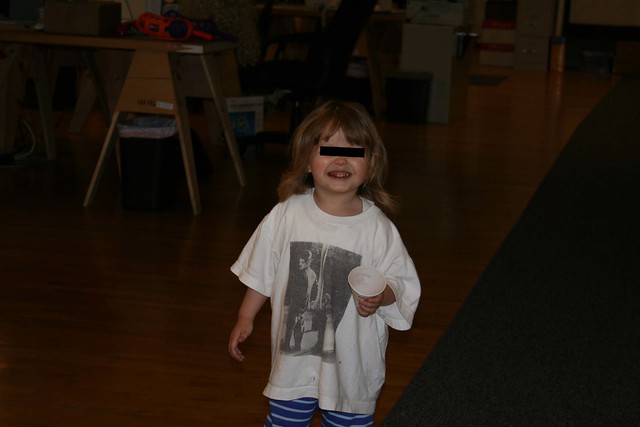If you’ve been a very good boy or girl, Santa Claus might have left a digital SLR under the tree for you. Maybe you know nothing at all about photography, or maybe you’ve been shooting with your phone or with a point & shoot camera for a while, and now you have this fantastic new camera. What’s your next step?
A lot of photographers will give you a lot of different advice. Some will tell you that the first thing you should do is read the camera’s manual from cover to cover. Others will tell you that you absolutely have to replace the kit lens with something better. If you have exceptionally smart friends, the first thing they’ll do is send you to this website and tell you to learn about exposure. :-)
From where I sit, they’re all wrong– even the ones who sent you here. Let me explain why.
Reading the manual is great if you already have a good understanding of photography and you just want to know the specifics of the individual camera controls. Even then, it’s going to be way too much information for you to absorb all at once– it will be trying to drink out of the proverbial fire hose. Plus, the manual will tell you what all the buttons and menus and doodads and doohickeys do, but it won’t give you much of an understanding of why you’d want to do any of those things. So do read the manual, but only as much as you need so that you can turn the camera on and take some pictures. Once you get that far, stop reading and put the manual away in a safe place.
People are right that the kit lens that came with your camera probably isn’t very good. Who cares? If you’re a beginning dSLR owner, you won’t be very good either. I wasn’t. You want to see how bad I was? This is the very first image that I took with my first digital SLR.
I think she’s the daughter of a coworker, but I’m not sure– hence the black bar on her eyes. It’s a great picture, isn’t it? Yeah, OK, not so much. The second one isn’t much better– it’s a photo of the lens cap. I kept at it, though, and a few months later when I visited Alcatraz and shot this gem:
OK, at least it’s properly exposed. The focus leaves something to be desired, though. I think I was trying to capture the geometry of the tank, but I failed miserably.
The general philosophy over here at Stop Shooting Auto! world headquarters is that you should only buy new camera gear when you have a specific need that isn’t being met by your current equipment. If your lens really isn’t good enough, then by all means go invest in a better one. When you’re shooting at this level of competence, though, it’s not your equipment that’s holding you back.
As for reading this website, well… I happen to think it’s a damned fine site full of useful content, and it’s one that every beginner should get to eventually. If you just got the camera, though, you should wait a little bit before you dive in here.
So now that I’ve told you what not to do, I guess I should say something positive. The thing you should do more than anything right now is go take some pictures! The very best way to learn is to go out and practice, and experiment. You’ll get lots of really horrible photos, but that’s OK. Nobody has to see them unless you publish them on the web so the whole world can see how horrible you were when you first started out. (Ahem.)
Spend a few minutes looking at your pictures afterward. Are they good? Bad? What makes the good ones better than the bad ones? Can you identify the problems with the bad ones? You don’t have to know any technical language to do this– your eyes will understand. “This picture is too dark.” “This one is blurry.” “There’s a tree growing out of my friend’s head.” You probably won’t know how to solve these issues yet, but you’ll start to recognize common photographic problems. OK, the tree problem is easy to solve– don’t pose your friend where there’s a tree right behind his head.
After you’ve played around for a bit you’ll start to get a feel for what works and what doesn’t. That’s a good time for you to start reading. Dig into the exposure lessons here, and consult your manual when you need to know the specifics of how to do something on your particular camera. Take the time to do the exercises, since doing something is the best way to learn about it. Keep shooting, and keep experimenting, and eventually you can become a pretty decent photographer.
But for now, stop reading. Stop lusting after equipment. Just go take a bunch of pictures and see what happens.




